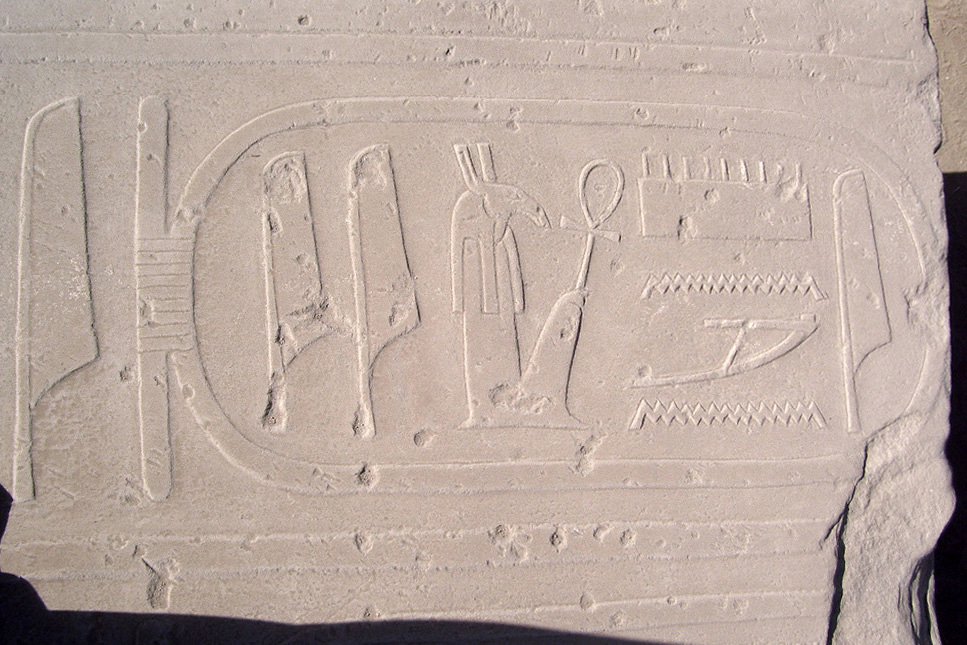
Here is a very nice example of Seti II's cartouche, this taken by Mogg Morgan at Karnak's Open Air Museum

Seti I cartouche

Seti II cartouche


Seti I cartouche

Seti II cartouche
|
Several pharoahs had Set as part of their name, Seti I (also spelled Sety I, Sethos I), Seti II (also spelled
Sety II, Sethos II), and Setnakt (also spelled Setnakht, Setnakhte). Seti means "of Set", which indicates that he was consecrated to the god Set, his patron deity, otherwise rendered "Man-of-Set". Setnakt means "Set is strong". Therefore, one of their cartouches is usually a good opportunity for a small Set find. Usually! In _The Monuments of Seti I and their Historical Significance: Epigraphic, Art Historical and Historical Analysis_, a doctoral thesis by Peter James Brand, he says: "It was Seti who founded the great residence of the Ramesside kings and developed the ancient cult center of the dynastic god Seth at Avaris." Not only that, Seti I gave honor to Set in many of his monuments. I thought one way to tell the difference between a cartouche of Seti I and one of Seti II was the presence of the glyphs for Amun. But it's not that simple. Here is one of Seti I, aka Men-Ma'at-Re, which shows Amun: |
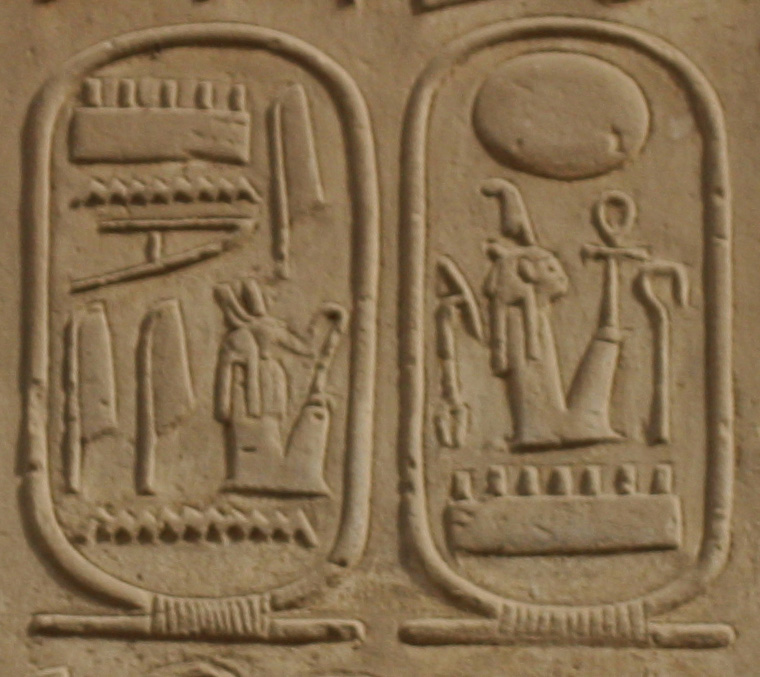
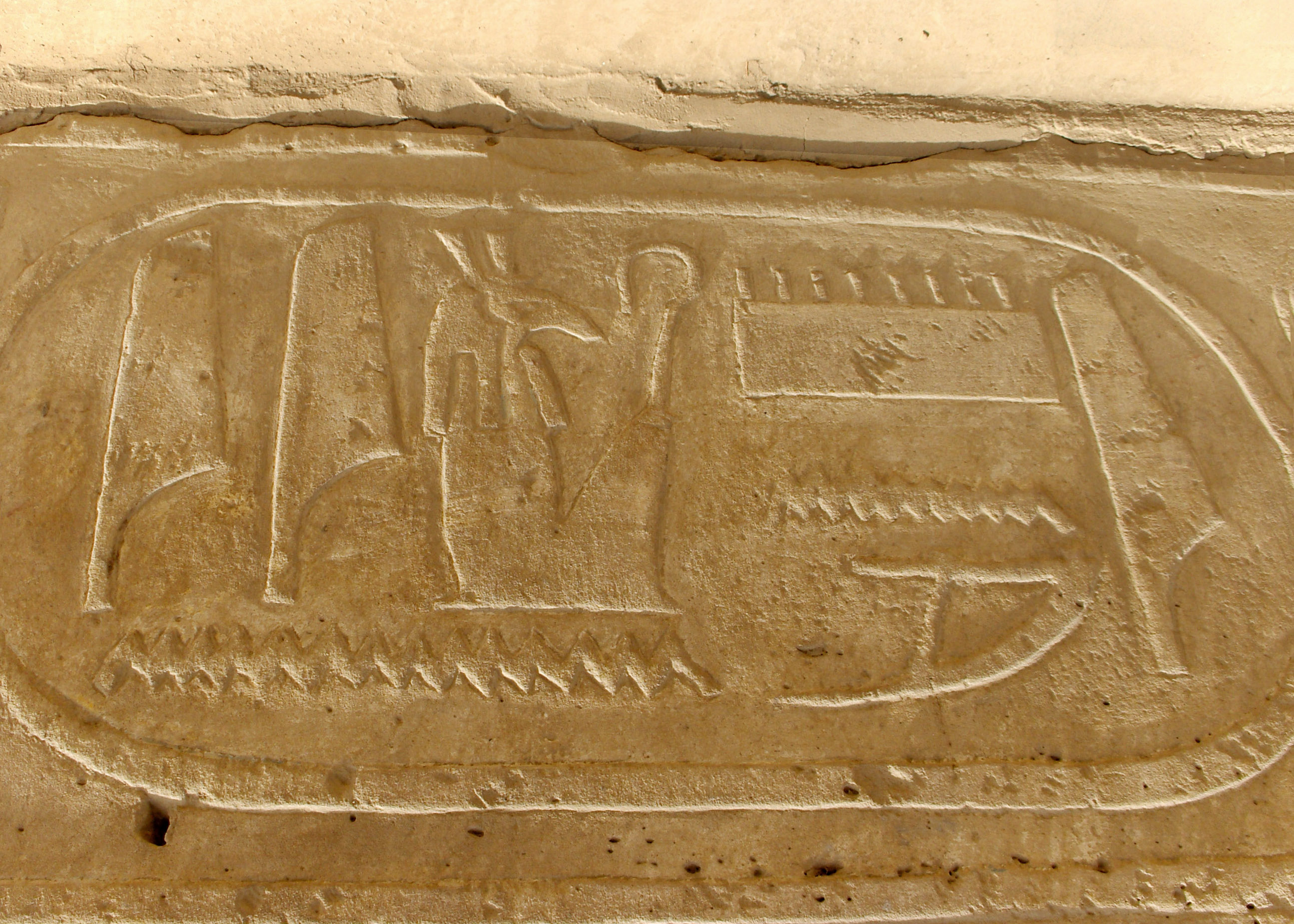
This one is at the Karnak Open Air Museum, on a dismantled sandstone block of Seti I
Hans Kontkanen took the photo above, "at bright daylight at noon time"
|
I would have thought perhaps it is of Seti II, but the KMT magazine, VOLUME 15, NO. 4, Winter 2004-05, which features a smaller crop of this cartouche, says it is Seti I's. His cartouches vary quite a bit, but the 'Men-Ma'at-Ra' is usually consistent.
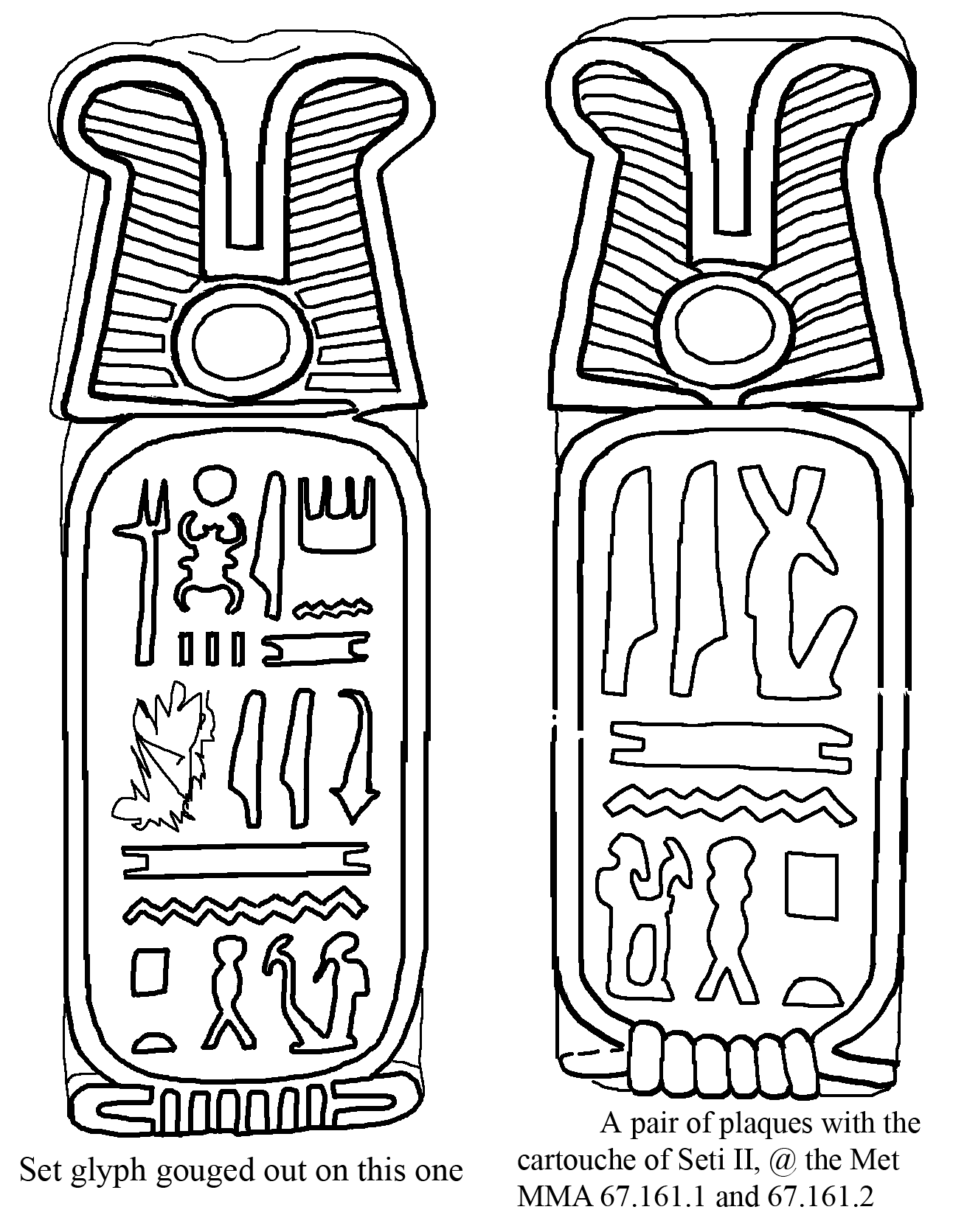 Traced from a photo I took at the Met Museum Two faience tiles inlaid with Seti II's throne names, late Dynasty 19, c.1237-1200 B.C. Metropolitan Museum, a little over five inches tall
Happily, though, the British Museum has one of Seti II's tiles, and it has an undamaged Set glyph! It's been on display at the Cleveland Art museum, during its Pharaoh: King of Ancient Egypt, where a colleague got a photo of it: 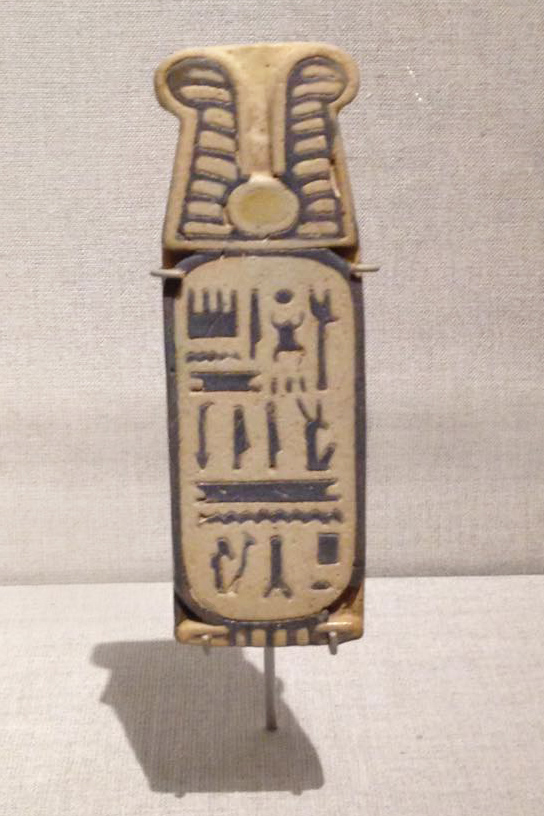 EA67970, photographed by Sarytsenuwi EA12857 also has an undamaged Set glyph, although the tile is broken
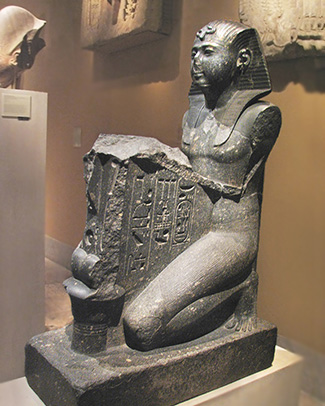 Black granite statue of Seti I, Dynasty 19, reign of Seti I (ca. 1294-1279 B.C) Rogers Fund, 1922, MMA 22.2.21
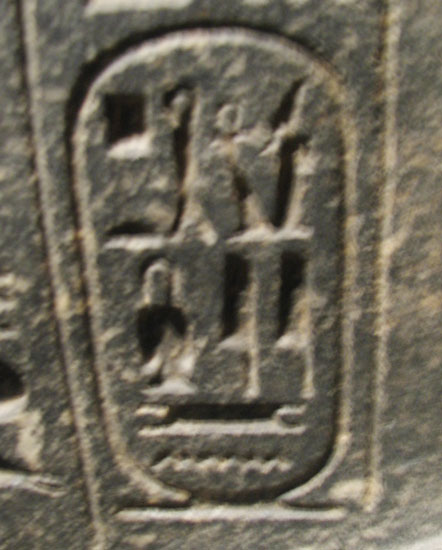
There's an explanation in a footnote in TeVelde's book (page 132):

In such way Š(w)t(y) is pronounced the same as Seti's name, As TeVelde explains, "the Upper-Egyptian pronunciation may have been Sut, evolved to Set," (or more properly, since I can't find special html characters for these words, see TeVelde, pages 2-3:
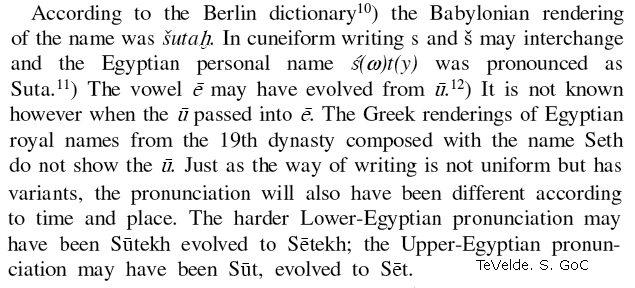
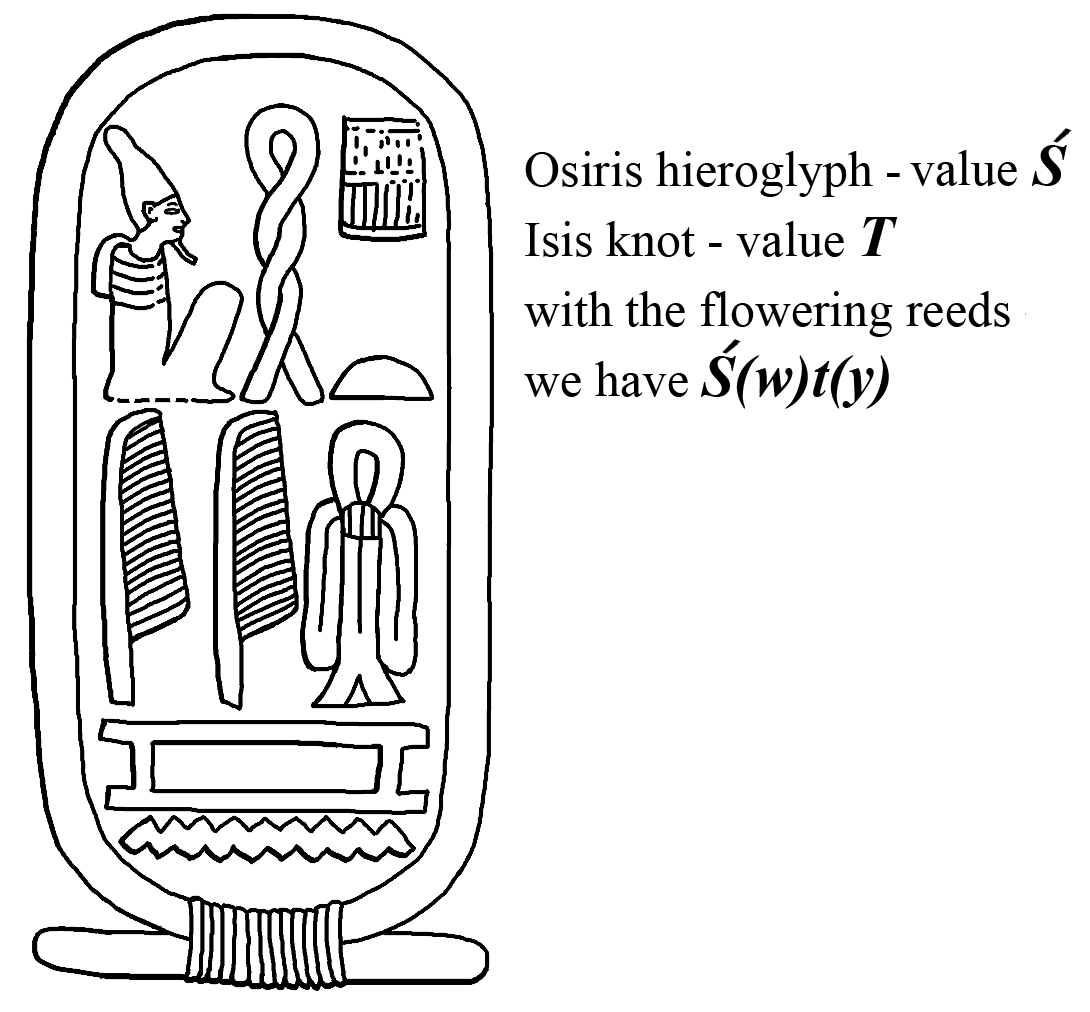 Traced from a photo by Heidi Kontkanen
 Isis Knot, aka 'Tyet' or 'Tet'
|

|
The one cartouche has some variance, but 'Menmaatre' is clearly the standard version, and Set is clearly identified. The Brooklyn Museum has an interesting model of a temple gateway, featuring Seti I's cartouche: |


Capture of Seti I on the side, showing his cartouche with the Set hieroglyph...
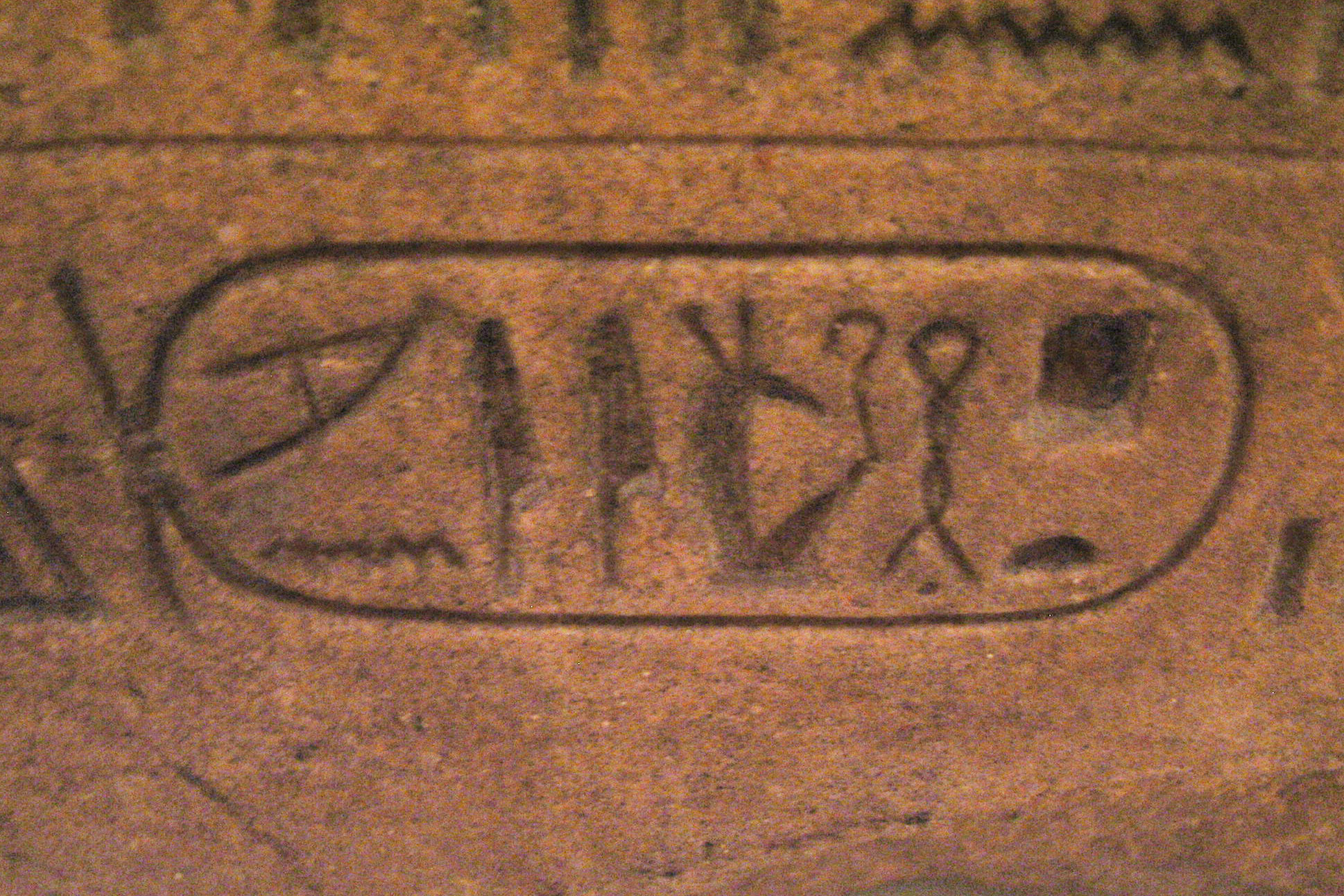
Zeroing in on his cartouche... (this is from the other side)
| As I looked at photos from Karnak at Photobucket, I saw many of the amateur photographers had snapped various cartouches, and I saved them to disk to study later with the Budge book. Many of them on the underside of lintels, thus more protected from the sun, still have remnants of color on them. Then I spied one I recognized, "One of the Seti's": |
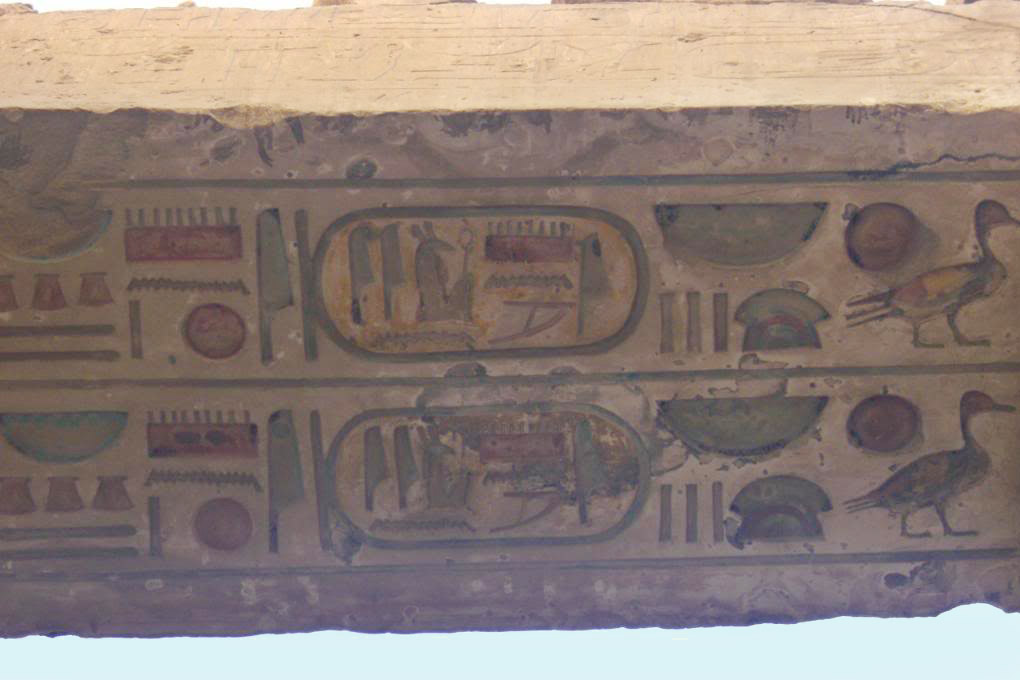
|
Although it doesn't exactly resemble Budge's examples, I think it's Seti I's cartouche. There's another lintel in Karnak very similar to this one which features his Menmaatre cartouche. I suspect they are near each other. Here's another cartouche that seems more likely to be Seti II's at first glance, though Wikipedia labels it as being Seti I's
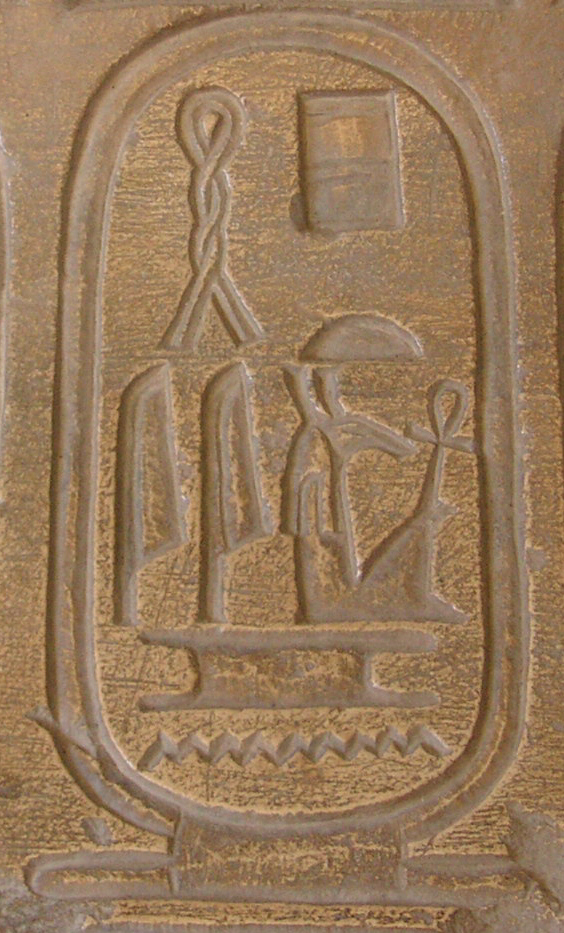 Photo credit "Ochmann-HH" for Wikipedia
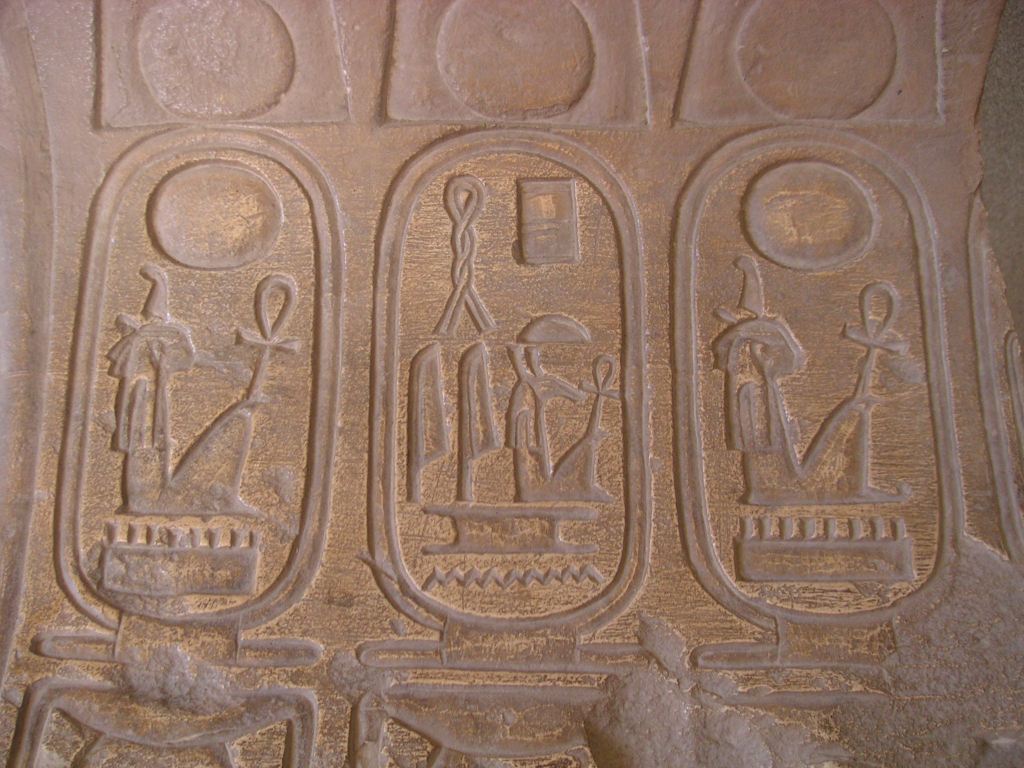 'Neithsabes' took this photo at Memphis Open Air Museum
|
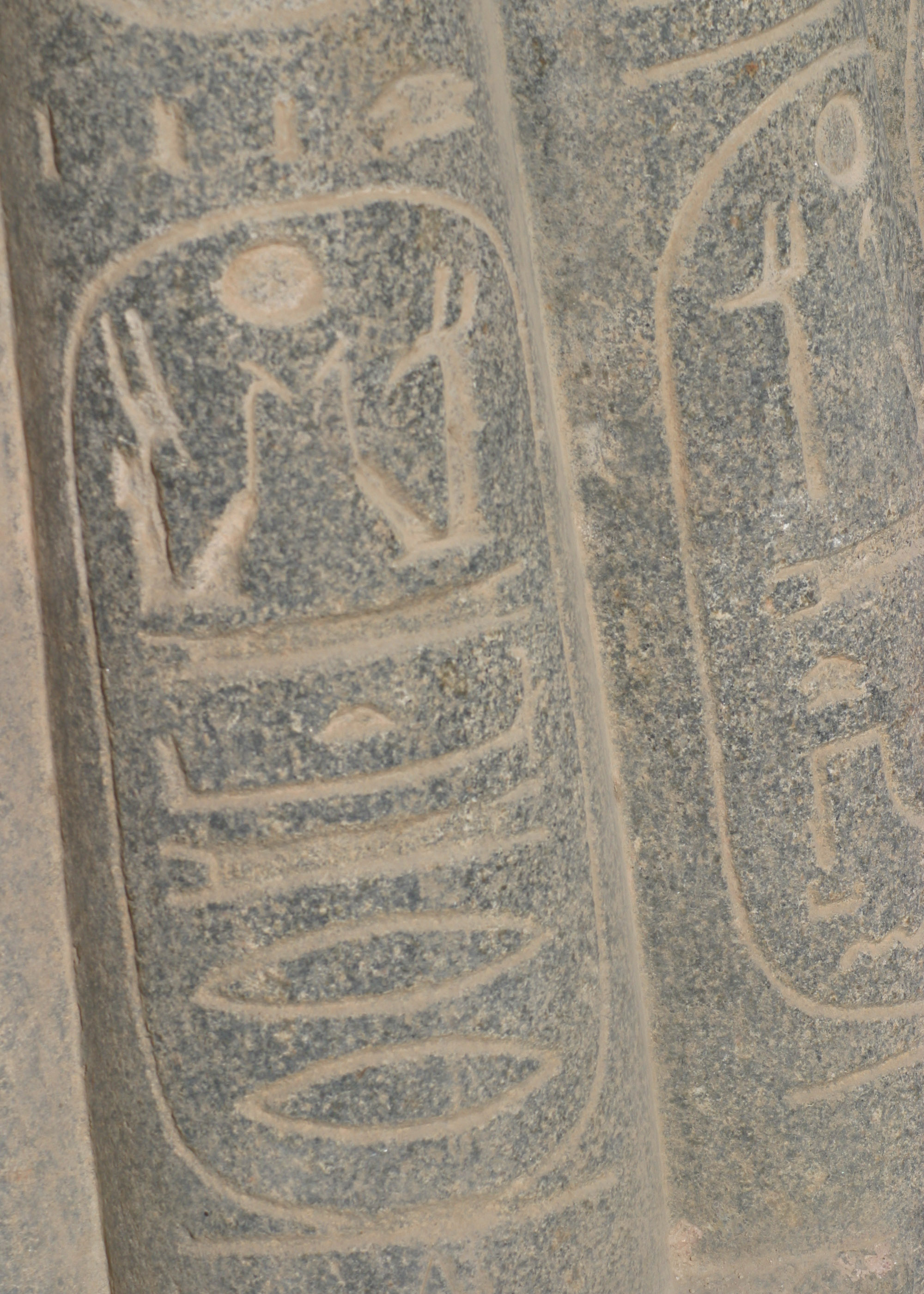

Cartouche via Budge